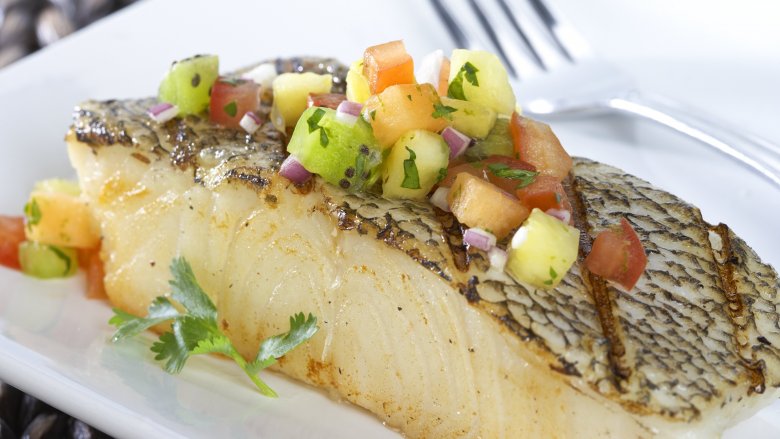The Reason Chilean Sea Bass Is So Expensive
Good luck finding Chilean sea bass on the menu at your local Red Lobster. The dish can be incredibly pricey and is typically found only in high-end restaurants. What is it that makes Chilean sea bass so expensive, though?
Well, the short answer would be supply and demand. "It's expensive because the fish is expensive," Matt Stein, the managing director of King's Seafood Distribution, told Taste. "The demand continues to outstrip the supply." The facts behind this pricey piece of fish are a bit more complicated, though. Let's break down the rise and fall of the Chilean sea bass and where it stands today.
Chilean sea bass became really popular in the 1990s
Chilean sea bass isn't actually bass at all, and it's not strictly limited to the waters off the coast of Chile. Mind-blowing, right? This rather ugly-looking fish was relatively unknown to seafood merchants prior to the 1970s and is a member of the cod fish family (via The Daily Meal). It lives primarily in the deep waters off the western South American coast and its range can stretch all the way down to Antarctic waters. The actual name of this fish is Patagonian toothfish, and let's be honest — that name is rather unappetizing. At least that's what a fish wholesaler thought who eventually renamed it "Chilean sea bass" because of its white flaky meat.
Chefs soon took notice and by the early 1990s it was on the menus of places like the Four Seasons and high-end Japanese restaurant Nobu. Even a name drop in Jurassic Park kicked up the fish's popularity (via Vice). Everybody wanted to try it and restaurants couldn't keep it in stock fast enough.
By the early 2000s, however, the Patagonian toothfish was being over-fished (via National Geographic).
Chilean sea bass makes a comeback (and it's still not cheap)
Chilean sea bass fell out of favor with most restaurants after campaigns pointed out how its populations were under threat. Sustainable fishing practices eventually led to it making a comeback... somewhat. New York seafood distributor Louis Rozzo told Taste that "the demand for it is a lot less than it used to be." This doesn't mean that it's about to be cheap anytime soon, though.
Stocks of the fish are still low and its price has gradually been climbing since 2010, according to Seafood Source. In 2012, an 8-ounce portion went for around $15, but by 2017 that price was at $21 — though it did drop to $20 by 2018. "Chilean sea bass, there was a period there when there was no ceiling for it," sales director of Beaver Street Fisheries, James Berger said.
Of the exorbitant prices diners are willing to pay for this delicate fish, Berger explained, "Some fish have traits that give it an invincibility. One of those things is taste. [Chilean sea bass] is very rich, melts in your mouth, and that [appreciation] seems to be universal." In other words, this fish isn't going to end up on value meals any time soon.


